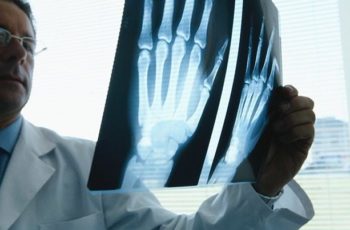Osteoporosis is a form of arthritis that happens when the bones weaken or lose their proper density. This causes the bones to suddenly and unexpectedly fracture. In fact, the majority of people aren't even aware that they have osteoporosis until they suffer a fracture.
There are certain things that put a patient at a higher risk of developing osteoporosis. These include genetics, a history of Rheumatoid Arthritis, low body weight, alcoholism, smoking cigarettes, low levels of calcium or Vitamin D, and lack of exercise.
Although many cases are not caught until fractures have already occurred, there are a few osteoporosis symptoms that could help make for early detection.
There are also symptoms that present themselves once the disease has progressed. Today we are going to take a look at this wide range of osteoporosis symptoms.
Osteopenia: The Warning Sign
Prior to developing full-on osteoporosis, patients will often develop osteopenia. Many medical professionals call this the “bridge” or “halfway mark” between normal, healthy bones and full-blown osteoporosis.
This is when the bones are weaker then they should be, with bone density levels below optimal levels, but have not yet become so severe as to risk fractures or breakages.
If your doctor has caught this issue, then there are changes you can make to prevent the onset of osteoporosis. These might include tobacco cessation, alcohol cessation, exercise, diet changes, and other healthy lifestyle choices.
Osteoporosis Symptoms
The first osteoporosis symptoms noticed by most patients is that of a fracture or breakage in the bones, most usually large ones like the spine.
Patients with osteoporosis are much more prone to fractures than would be normally expected in an average adult with healthy bones. This can also sometimes result in a collapsed vertebrae in the spin.
Due to the bones weakening and loss of density, many patients often present with a stooped stature similar to that seen in scoliosis. Many patients will also present with a gradual loss of height over a long period of time, which is primarily due to collapsing vertebrae's in the spine.
Pain is a common complaint, which is understandable. Fractures are painful, and the complications of them only add to a patient's pain. This is often managed through physical therapy, prescription pain medication, and over the counter pain medications.
What To Do If You Think You Have Osteoporosis Symptoms
If you think you may be suffering from undiagnosed osteoporosis, you should make an appointment to speak with your doctor. Only a certified medical practitioner can diagnosis osteoporosis properly, and like with all diseases, the earlier the detection, the better the outlook is.
Please remember that a self-diagnosis or information found online cannot substantiate a positive diagnosis.
When you go to your doctor's appointment, he or she will perform a thorough physical examination. They will also ask about your medical history.
A diagnosis of osteoporosis often relies heavily on imaging like X-rays. These can show if there has been damage or weakening in the bones.


